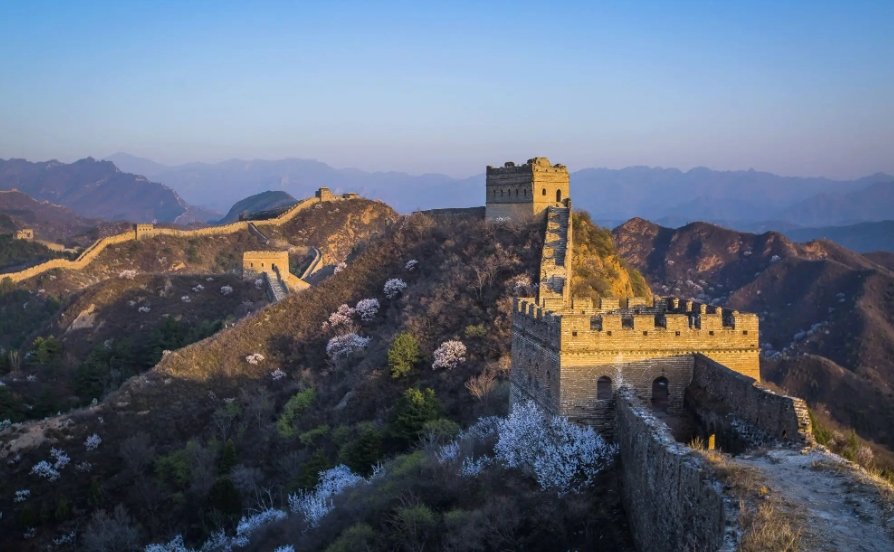
The Great Wall of China: A Monumental Marvel
The Great Wall of China is not merely a wall; it is a testament to human perseverance, ingenuity, and the relentless march of history. Stretching across rugged mountains, desolate deserts, and verdant plains, the wall is an awe-inspiring spectacle that captivates the imagination and leaves visitors breathless.
A Colossus of Construction
The most astonishing feature of the Great Wall is undoubtedly its sheer scale. As the longest man-made structure in the world, it spans an incredible distance of approximately 13,170.7 miles (21,196.18 kilometers). To put that into perspective, this colossal construction could circle the equator more than halfway!
This monumental undertaking wasn't achieved overnight. In fact, the Great Wall is the culmination of centuries of labor and dedication, with construction spanning over two millennia. Different sections of the wall were erected by various Chinese dynasties, each leaving their unique mark on this architectural behemoth.
A Tapestry of Time
The history of the Great Wall is as complex and fascinating as its structure. Construction began as early as the 7th century BC, with different kingdoms erecting individual walls to protect their territories. It wasn't until the Qin dynasty (221-206 BC), under the reign of the ambitious Qin Shi Huang, that these disparate sections were joined together, forming the foundation of the Great Wall we know today.
Over the subsequent centuries, dynasties like the Han, Sui, and Ming dynasties continued to expand and fortify the wall, adding watchtowers, signal stations, and garrisons. Each dynasty contributed its unique architectural style and construction techniques, resulting in a fascinating tapestry of architectural evolution along the wall's length.
A Protector and a Symbol
While the Great Wall is undeniably a marvel of engineering, its purpose extends far beyond just being a physical barrier. It served as a crucial line of defense against invading nomadic tribes, providing a strategic advantage to the Chinese empires. The wall's watchtowers, strategically placed along its length, allowed for rapid communication using smoke signals and beacons, alerting defenders to impending attacks.
However, the Great Wall's significance goes beyond its military role. It stands as a powerful symbol of Chinese civilization, representing the country's enduring strength, unity, and determination. The wall's imposing presence served as a reminder of the empire's might and instilled a sense of national pride in its people.
The Great Wall Today
Today, the Great Wall stands as a UNESCO World Heritage Site and one of the most popular tourist destinations in the world. While some sections have succumbed to the ravages of time and neglect, many parts have been painstakingly restored, offering visitors a glimpse into the architectural brilliance and historical significance of this iconic monument.
Walking along the wall, one can't help but feel a sense of awe and wonder at the scale of human ambition and the enduring legacy of this magnificent structure. The Great Wall of China is not just a wall; it's a testament to human endeavor, a symbol of national identity, and a timeless wonder that continues to inspire generations.
Q&A
1. What was the primary purpose of the Great Wall?
While it served as a formidable physical barrier, the Great Wall's primary function was to hinder and delay nomadic invasions, providing a strategic advantage to the Chinese armies. It also facilitated communication and troop movement along its length.
2. Which dynasty is credited with unifying the initial sections of the Great Wall?
The Qin dynasty, under the rule of Qin Shi Huang, is credited with connecting the pre-existing walls and establishing the foundation for the Great Wall we recognize today.
3. Apart from its defensive role, what does the Great Wall symbolize?
Beyond its military purpose, the Great Wall embodies the strength, unity, and cultural identity of the Chinese people. It represents their resilience, ingenuity, and the enduring spirit of their civilization.